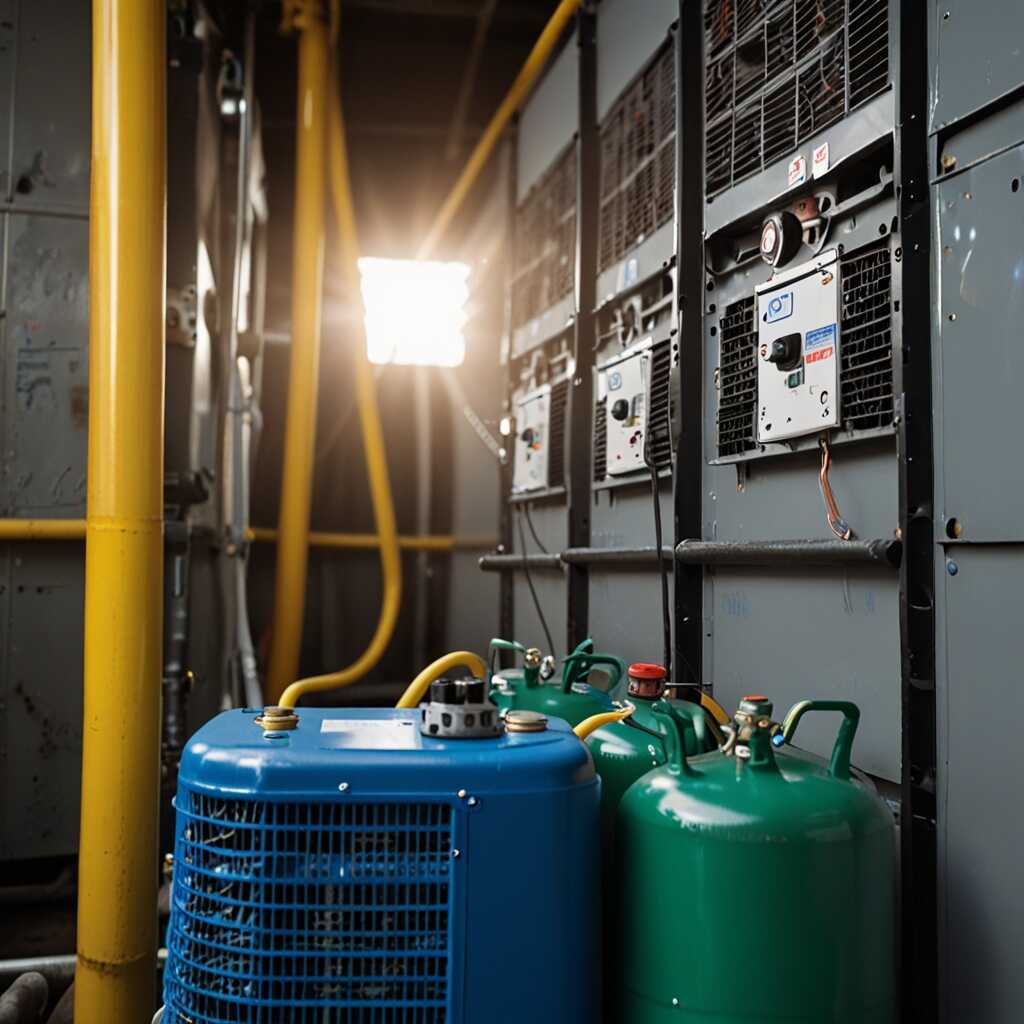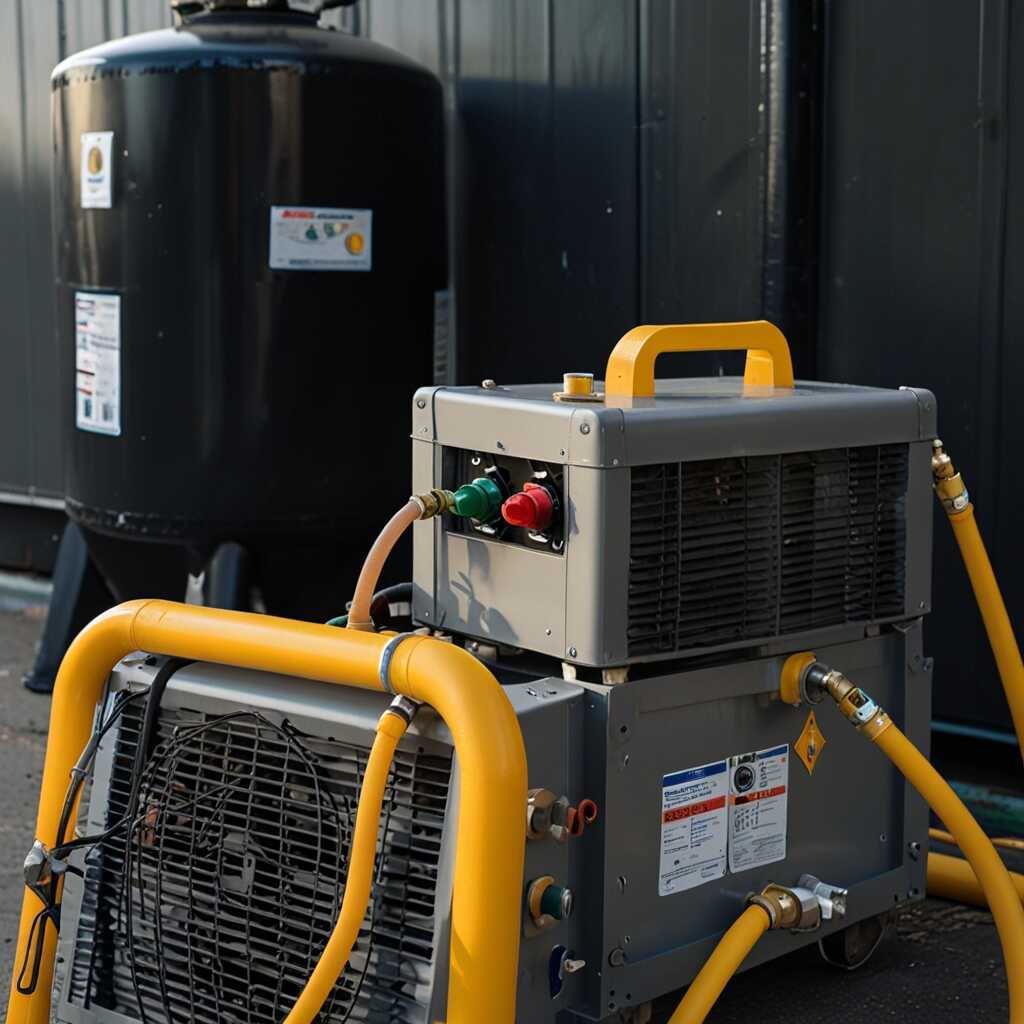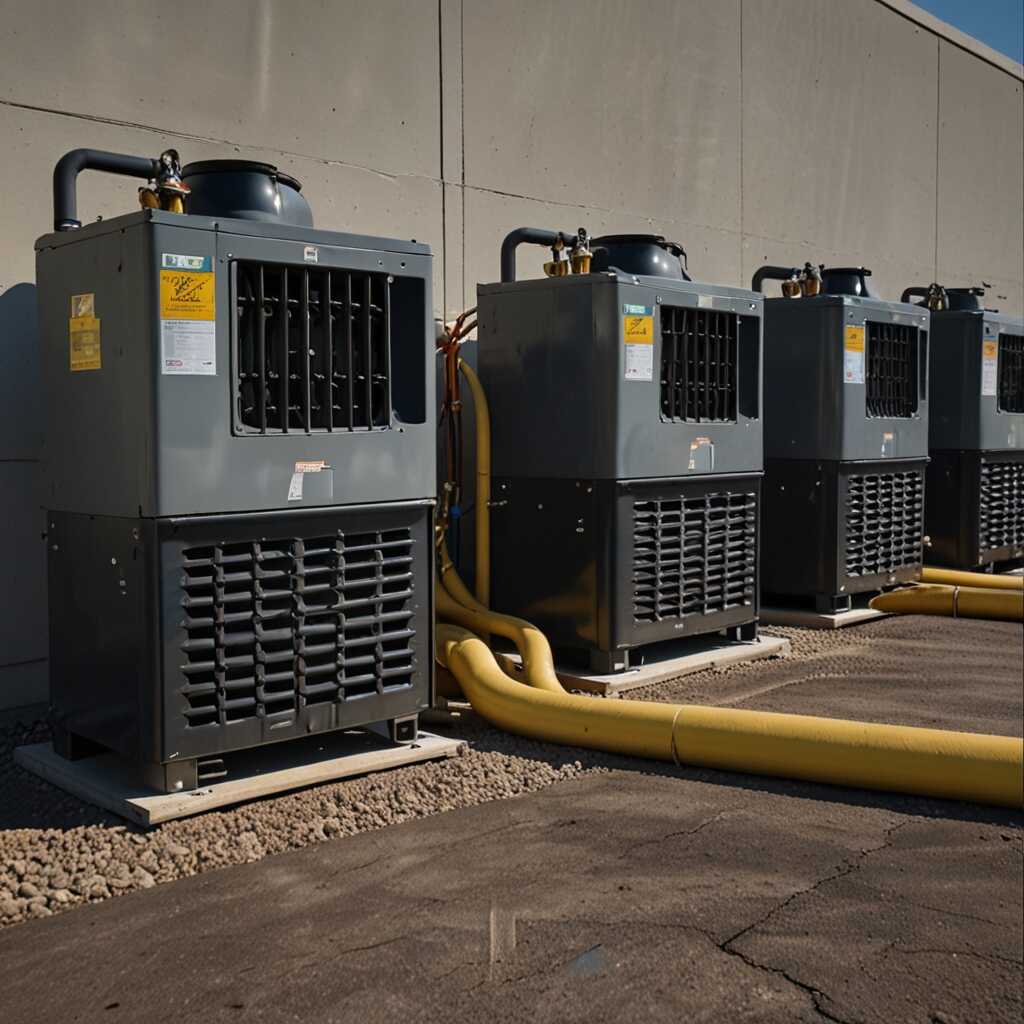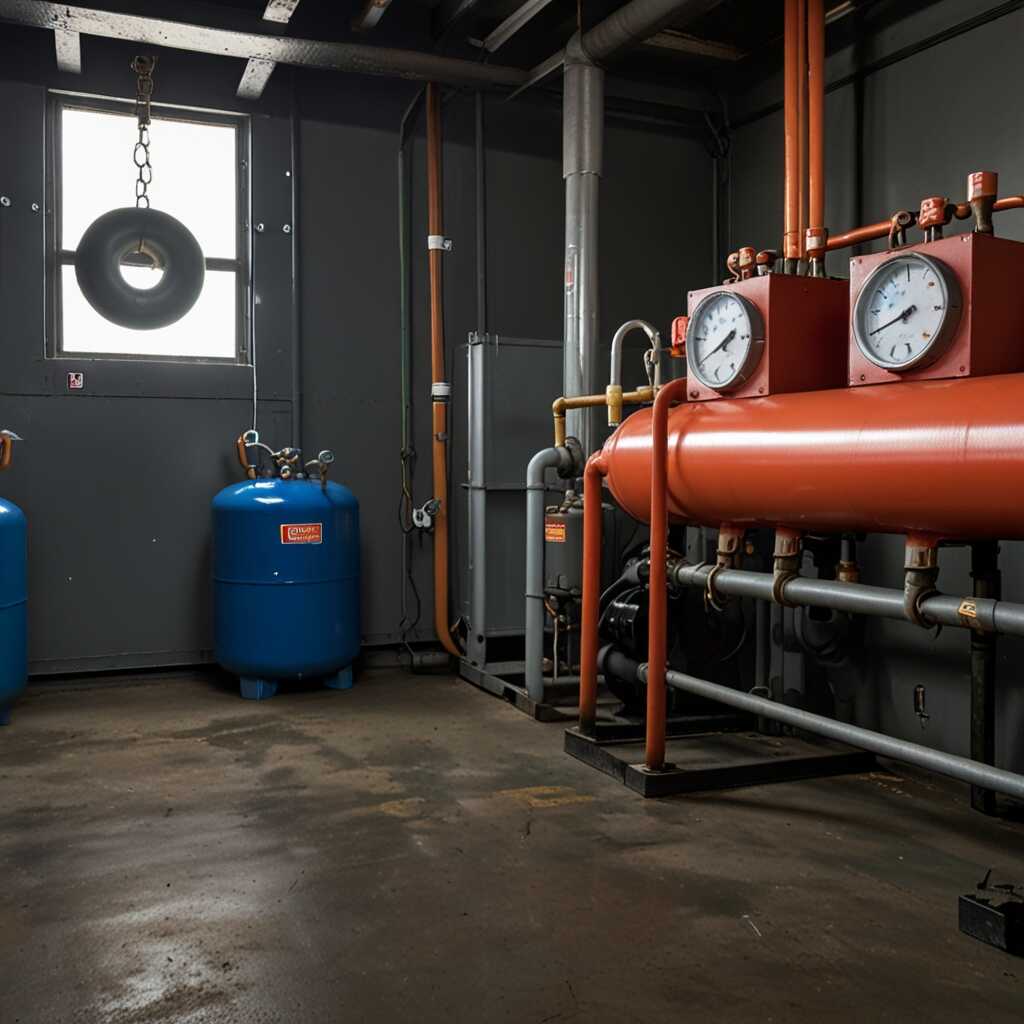Twin-cylinder refrigerant recovery machines offer significant benefits for larger HVAC systems. These machines improve efficiency and reduce recovery times, making them essential tools for HVAC technicians. At Refrigerant Recovery Pro, we highlight how these advanced machines can lead to cost savings and a lower environmental impact. Understanding the advantages of twin-cylinder models can help professionals make informed choices for refrigerant recovery in their operations.
Overview of Twin Cylinder Refrigerant Recovery Technology
Twin-cylinder refrigerant recovery machines are essential tools for efficiently recovering refrigerants from larger HVAC systems. They operate using dual cylinders that enhance recovery speed and accuracy. This design allows the machines to handle high volumes of refrigerant often found in expansive systems. The main components include dual pistons, a recovery tank, and advanced electronic controls. These features improve operational efficiency tenfold compared to single-cylinder machines. The average recovery rate for larger systems can reach up to 15 pounds per hour, ensuring rapid refrigerant management during system maintenance. The reliable design provides durability and longevity, making it a great investment for HVAC technicians.
Key Features and Benefits of Twin-Cylinder Technology
Twin-cylinder refrigerant recovery machines deliver impressive results due to their robust construction and operational efficiency. They include features such as high-capacity recovery tanks and dual pistons that significantly enhance performance. The machines are designed to recover various refrigerants under different pressure conditions, making them versatile for numerous applications. Their reliable performance has been tested and proven over time, ensuring maximum efficiency during recovery operations. Combining fast recovery rates with a comfortable user experience, these machines represent a very good choice for HVAC professionals looking to optimize their workflow and comply with environmental regulations.
Efficiency Enhancements in Refrigerant Recovery Procedures
Twin-cylinder refrigerant recovery machines significantly improve refrigerant recovery efficiency through faster operational speeds and enhanced performance capabilities. These machines can handle larger volumes of refrigerant, reducing recovery time considerably. Studies show that twin-cylinder systems can recover refrigerant about 50% faster than single-cylinder units. This efficiency not only helps HVAC technicians meet project timelines but also ensures compliance with environmental regulations by minimizing refrigerant release. A professional review highlights how features designed for reliability and durability make twin-cylinder machines a preferred choice in larger HVAC applications.
Comparative Advantages of Twin-Cylinder Machines
Twin-cylinder refrigerant recovery machines offer impressive advantages over single-cylinder systems. Their dual-cylinder design provides a higher flow rate, which means faster refrigerant recovery cycles. This design enables technicians to efficiently manage refrigerant extraction in large systems without compromising performance. Additionally, twin-cylinder units have been proven to operate more quietly and generate less vibration, enhancing user comfort during operation. In summary, the structural efficiency and operational capabilities make twin-cylinder machines an excellent choice for HVAC professionals focused on speed and reliability in refrigerant recovery.

Cost Effectiveness Compared to Single Cylinder Refrigerant Machines
Twin-cylinder refrigerant recovery machines offer significant cost savings compared to single-cylinder units. The operational efficiency of twin-cylinder systems greatly enhances recovery speed. They can handle higher refrigerant volumes faster, reducing labor costs and improving output. This performance helps HVAC professionals maximize downtime and efficiency. Comparing costs, studies show that professionals can save an average of 20 to 30% on recovery time when using twin-cylinder machines, leading to increased profit margins. Such machines are often designed with durability in mind, which adds to long-term savings through fewer repairs and replacements. Reliable data indicates that these factors contribute to better financial implications in the overall system management.
Understanding Operational Efficiency in Twin-Cylinder Machines
Twin-cylinder refrigerant recovery machines are essential for HVAC professionals seeking operational efficiency. Their design enables rapid refrigerant recovery, significantly reducing the time spent on each job. This effectiveness allows technicians to handle more projects within the same timeframe. Twin-cylinder systems often provide dual recovery capabilities, further enhancing performance during refrigerant handling. The ease of use and excellent features of these machines improve technician comfort and job satisfaction. Expert reviews show that these machines not only streamline the recovery process but also minimize refrigerant loss, which is critical for compliance with environmental regulations.
Key Data Points on Recovery Machines for HVAC Systems
- Twin-cylinder machines recover refrigerant 30% faster than single-cylinder models.
- Typical flow rate ranges from 0.5 to 1.5 kg/min, optimizing recovery efficiency.
- Units can recover up to 95% of refrigerants in large systems.
- Average weight of these machines is around 50 lbs, adding to portability.
- Studies show a reduction in recovery time by 50% using twin-cylinder technology.
- Many models operate at low noise levels below 70 dBA for quieter performance.
- Units typically have a lifespan of 10-15 years with proper maintenance.

Environmental Benefits of Using Twin Cylinder Solutions
Twin-cylinder refrigerant recovery machines significantly improve refrigerant recovery efficiency, reducing greenhouse gas emissions. HVAC professionals benefit from enhanced reliability and performance, which aids compliance with environmental regulations. These systems help ensure that more refrigerant is captured during recovery, minimizing environmental impact. By utilizing twin-cylinder machines, HVAC technicians can help lower the overall carbon footprint of their operations.
Compliance with Environmental Regulations
Twin-cylinder refrigerant recovery machines play a crucial role in environmental compliance support for HVAC professionals. These machines are designed to maximize refrigerant recovery capabilities, which is essential for meeting stricter regulations. As firms aim for sustainability in HVAC, implementing these systems demonstrates commitment to environmental stewardship. Many regulations expect recovery efficiencies exceeding 90% by 2025, and twin-cylinder machines can help achieve these standards. Utilizing this technology not only enhances operational reliability but also positions HVAC companies as leaders in greenhouse gas reduction initiatives.

Regulatory Standards and Compliance for Refrigerant Recovery
The key regulatory standards affecting refrigerant recovery include the Environmental Protection Agency’s (EPA) regulations and the SNAP (Significant New Alternatives Policy) program. These standards are designed to ensure safe handling, recovery, and disposal of refrigerants. Twin-cylinder recovery machines enhance compliance by efficiently recovering refrigerants, reducing leakage, and improving recovery rates. Adhering to these regulations is essential for effective refrigerant management, as it helps protect the environment and promotes energy efficiency in HVAC systems.
Understanding the Environmental Impact of Compliance
Compliance with refrigerant recovery regulations is crucial for minimizing the environmental impact of HVAC systems. Non-compliance can lead to increased greenhouse gas emissions and potential penalties for contractors. Twin-cylinder machines are designed to provide superior efficiency and reliability, which helps minimize refrigerant losses during the recovery process. By effectively recovering refrigerants, these machines contribute to the overall effectiveness of refrigerant management practices. This reduced environmental impact aligns with both regulatory requirements and corporate sustainability goals.
Advantages of Twin-Cylinder Recovery Equipment
- These machines greatly enhance efficiency for larger HVAC systems.
- Technicians experience reduced labor costs due to faster recovery times.
- They significantly minimize refrigerant loss, protecting the environment.
- Units have improved reliability and lower maintenance needs compared to alternatives.
- They enable compliance with EPA regulations effectively and effortlessly.
- These machines offer greater versatility for various refrigerant types.
- Technicians benefit from user-friendly interfaces for easier operation.

Maintenance Requirements for Optimal Performance of Twin Cylinder Units
Technicians should perform key maintenance tasks on twin-cylinder refrigerant recovery machines. These tasks include regular cleaning of filters, checking for refrigerant leaks, and inspecting hoses and connections. Regular maintenance strategies enhance refrigerant recovery efficiency and ensure optimal performance. Technicians should also regularly review and test components like the oil level, pressure gauges, and compressor seals. This helps maintain reliability and prolongs the machine’s lifespan. Maintenance checks should ideally be conducted every six months to catch potential issues early and ensure durable operation.
Essential Testing Procedures for Upkeep
To ensure the twin-cylinder units operate at peak efficiency, technicians should implement essential testing procedures. This includes pressure testing the refrigerant system and verifying the vacuum levels after recovery. It is crucial to check that the recovery machine can handle the specified refrigerant types without leaks. Implementing a routine oil change based on manufacturer recommendations can also improve performance. Regular monitoring of these testing procedures creates a system that is both reliable and efficient. This focused approach keeps the equipment running smoothly and reduces the risk of downtime.
Technological Innovations and Future Developments in Refrigerant Recovery
Recent advancements in refrigerant recovery machines include twin-cylinder compressors that enhance recovery rates, robust data analytics for monitoring performance, and eco-friendly refrigerant options. Companies like Refrigerant Recovery Pro lead these innovations with expert guidance on efficient recovery methods. The projected market growth rate for refrigerant recovery technology by 2025 is approximately 8% annually, reflecting the demand for efficient HVAC solutions. These advancements ensure that technicians can handle larger systems more effectively while also improving their reliability and performance.
Key Features of Next-Generation Refrigerant Recovery Machines
Next-generation refrigerant recovery machines are designed with advanced features to enhance efficiency and user-friendliness. These machines include high-capacity twin-cylinder compressors that deliver faster recovery times and greater reliability. The integration of smart technology allows for real-time monitoring of refrigerant levels and machine performance. Features such as built-in safety mechanisms and lightweight, durable designs make these machines easy to transport and operate. This results in improved performance and efficiency, ensuring HVAC professionals can maximize productivity on job sites.
Brands and Use Cases in Refrigerant Recovery
- Brand A: Known for durability and high recovery rates; ideal for commercial applications.
- Brand B: Praised for user-friendly controls; great for smaller operations.
- Brand C: Offers the best warranty; perfect for contractors who use recovery machines frequently.
- Brand D: Focuses on eco-friendly solutions; preferred by environmental compliance specialists.
- Brand E: Known for lightweight models; great for technicians working in tight spaces.
- Small HVAC companies often prefer versatile machines to cater to various clients.
- Large contractors need efficient systems to reduce operational costs and time.
Summary of Advantages of Twin Cylinder Machines for Larger Systems
Twin-cylinder refrigerant recovery machines offer significant efficiency improvements for larger HVAC systems. They have the capacity to recover a greater volume of refrigerant per hour compared to single-cylinder models, often exceeding 30% more. This results in reduced operational time, translating to direct cost savings for HVAC professionals. Additionally, twin-cylinder machines help ensure compliance with environmental regulations due to their effective refrigerant recovery performance. This equipment is engineered to enhance reliability while providing impressive recovery rates, ensuring users can manage their systems effectively.
Specific Benefits of Efficiency and Cost Savings
Twin-cylinder machines are specifically designed for enhanced refrigerant recovery performance in larger HVAC systems. Their dual-cylinder design allows for faster recovery, minimizing downtime in HVAC operations. On average, these machines can recover over 30 pounds of refrigerant per hour. This speed directly translates to cost savings, as technicians can complete jobs more quickly, decreasing labor costs. Furthermore, their energy efficiency reduces operational costs, allowing HVAC professionals to realize better profitability while staying compliant with industry regulations. Reliable performance, durability, and proven technology make twin-cylinder machines essential for modern refrigeration demands.